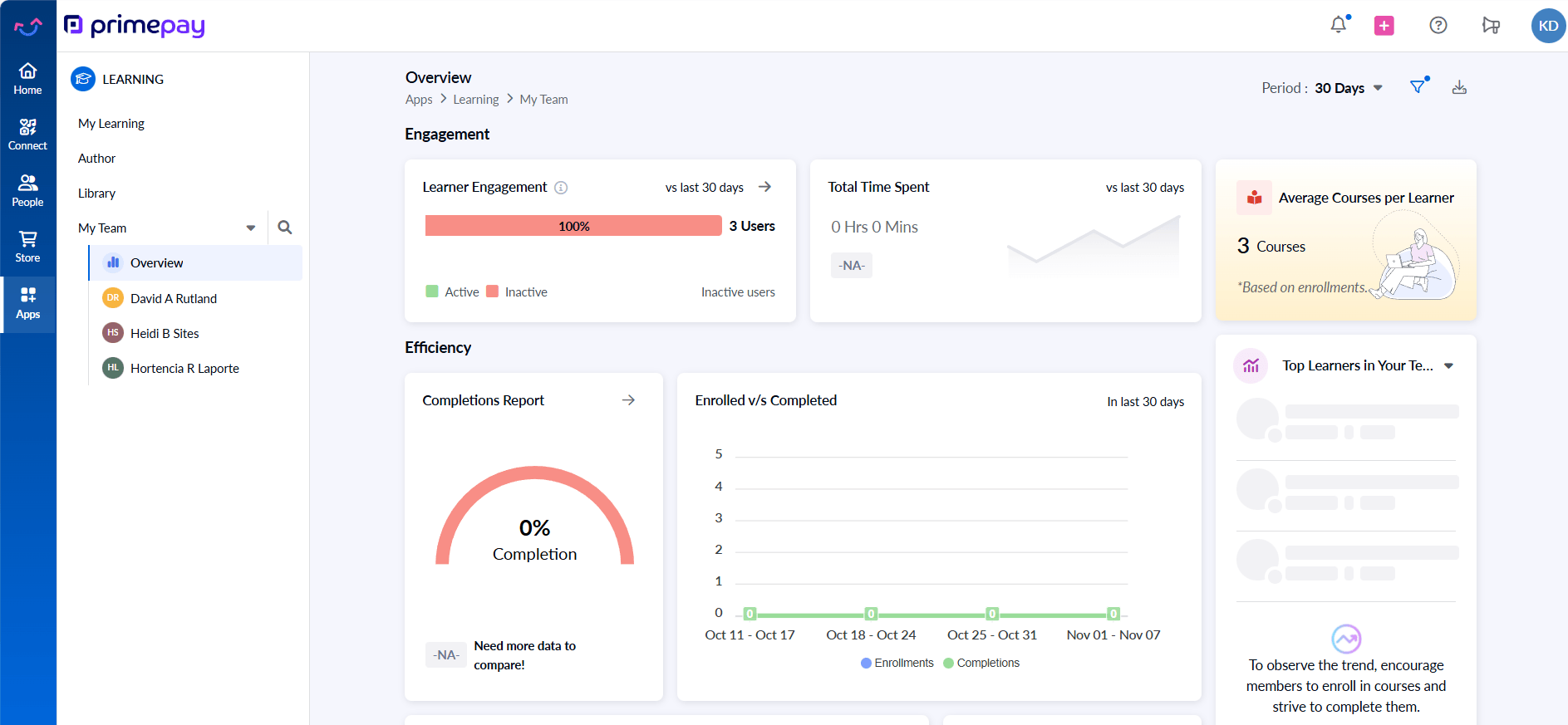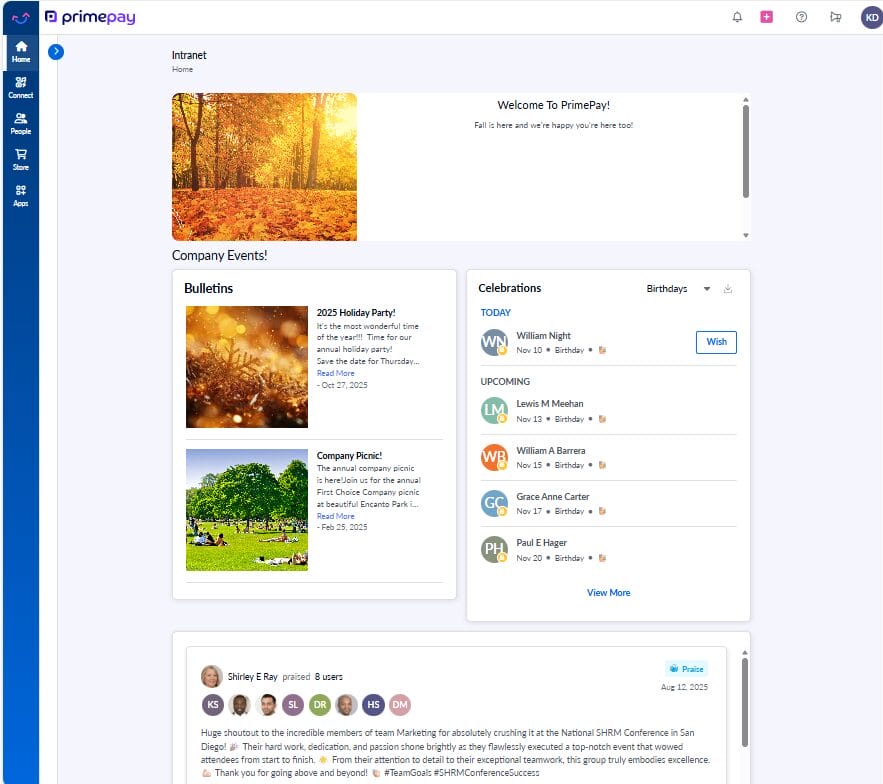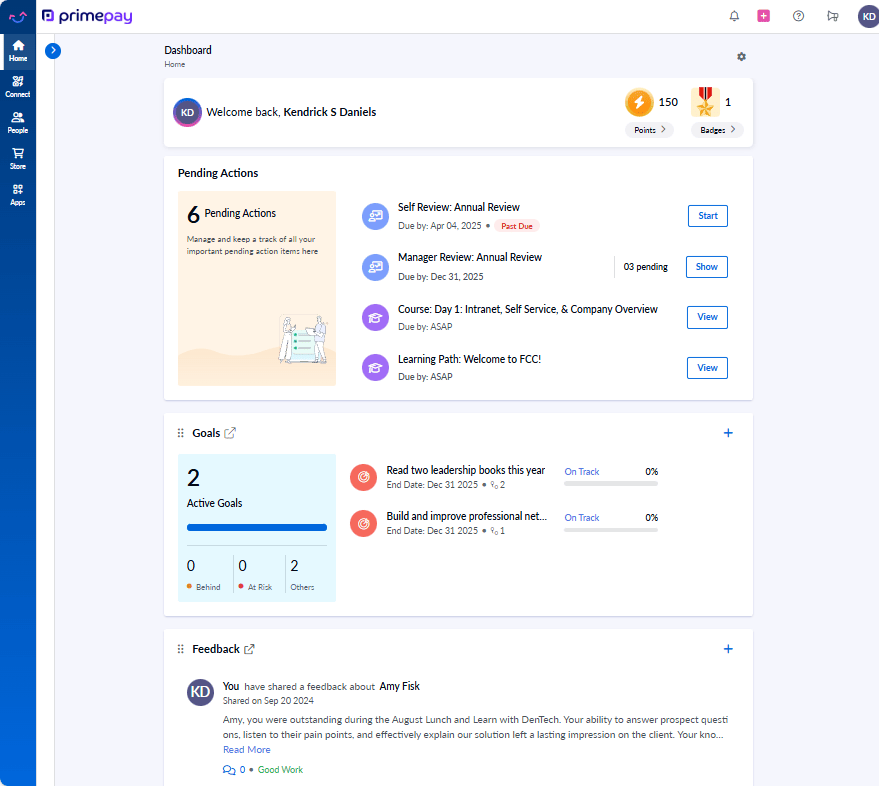Performance Management Software
Empower Smarter Performance with AI-Driven Insights
Transform reviews, feedback and goal alignment through intelligent automation that fuels employee growth and organizational success.

People managers struggle with scattered reviews, inconsistent feedback, and clunky systems that drain time and transparency. HR teams wrestle with manual tracking, biased evaluations, and limited visibility into performance trends. Executives make critical talent decisions without real-time insights, leaving engagement and productivity to guesswork.

43%
43% of organizations now leverage AI in HR tasks, up from 26% in 2024.
+23% Profitability
23% increase in profitability on average from companies with highly engaged workforces compared to competitors.
21%
21% of employees are engaged at work globally.
Meet Marissa: AI-Powered Coaching for High-Performance Teams
Learn and Develop
Unlock potential with personalized learning experiences powered by Marissa AI.
- Automate compliance training with AI-powered tracking.
- Integrate courses seamlessly with intelligent recommendations.
- Personalize learning paths through AI and gamification.
Meet Marissa, our AI Enablement Coach
Marissa is a first-of-its-kind technology that uses contextual AI to empower employees, managers and leaders to build a highly engaged, high-performing organization. Experience the future of performance management!

Foster A Culture of Continuous Feedback and Meaningful Conversations
Manage Performance
Align goals with strategic execution, backed by AI-driven intelligence.
- Customize review cycles with smart approval workflows.
- Deliver 360° feedback and multirater assessments powered by AI.
- Manage goals and OKRs with predictive, AI-driven insights.

Turn Employee Data Into Actionable Insights That Drive Results
Engage and Listen
Enhance workplace connection with AI-driven insights and engagement tools.
- Communicate seamlessly through a smart, organization-wide platform.
- Gather real-time analytics with AI-powered engagement surveys.
- Foster collaboration and connectivity with an interactive social platform.

Inspire and Engage Employees with Gamified Recognition
Recognize and Reward
Boost motivation with AI-enhanced recognition and gamified incentives.
- Recommend badges aligned with company values using AI insights.
- Offer a customizable rewards marketplace with dynamic point redemption.
- Reinforce positive behaviors through a gamified recognition system.

What Our Clients Say About Us
PrimePay HR is the one-stop shop for payroll and human resources...PrimePay HR is user-friendly and our employees can easily figure...

Payroll
Automated, compliant payroll that streamlines tax filing, worker’s comp, and built-in error alerts.
Learn About Our Payroll SoftwareTime & Attendance
Payroll-connected tracking that manages time off, holidays, accruals, absences, and scheduling.
See Our Time Functionality in ActionCompliance
Integrated add-on services that automate record-keeping & reporting and makes HR legally compliant.
Applicant Tracking
Intuitive online recruiting that simplifies job postings, and manages applicants & hiring of employees.
Learn More About Applicant TrackingHR & Onboarding
HR Services that you need and expect like Performance Management, Learning Management and HR Legal Advice.
Learn More About Our HR SoftwareBenefits Services
Comprehensive employee programs refined for modern workforce needs, delivering confidence and compliance.
See Our Benefits Admin Capabilities

Frequently Asked Questions
What is performance management software?
Performance management software enhances employee productivity and provides actionable insights to drive organizational success. Equipped with tools for performance reviews, real-time check-ins, goal tracking, competency assessments, and data-driven reporting, it enables continuous performance monitoring and fosters a culture of growth and accountability. By streamlining evaluations and feedback, businesses can optimize workforce potential and improve overall engagement.
Does my company need performance management software?
Performance management software benefits companies of all sizes. Whether you’re a small business or a large enterprise, performance management software can:
-Streamline your appraisal processes
-Enhance team performance
-Boost productivity
-Facilitate goal setting and progress tracking.What are key features of effective management software?
A range of standout features designed to enhance the performance management process characterizes effective management software. Customizable templates allow organizations to tailor evaluations to meet the specific needs of teams and individuals, ensuring relevant and practical performance assessments. Goal tracking, another significant feature, facilitates the setting of SMART goals and monitoring their progress, establishing a clear and transparent route to achieving objectives.
Additionally, analytics play a crucial role in performance management software, providing real-time performance data on goal performance and team trends, enabling organizations to make informed decisions to enhance employee performance.
Who uses performance management software?
A performance evaluation system benefits every employee, with HR professionals seeing the greatest impact, especially when transitioning from manual processes. Designed for businesses of all sizes and industries, it streamlines reviews, enhances workforce productivity, and fosters continuous growth across the organization.
How can I choose the best performance management software?
When selecting a performance evaluation platform, consider ease of use, integration capabilities, key features, and alignment with your business goals and budget. A well-chosen solution enhances efficiency, streamlines workflows, and supports long-term workforce development.
What are some common problems with performance management systems?
Underutilization, bias, and lack of structure are common problems in performance management systems. Performance management software can effectively tackle these issues by:
-Providing mechanisms for trackable feedback
-Capturing valuable data for more objective insights into employee performance and development needs
-Clarifying employee goals with their actual performance.

